Module 11: Japanese Art 1400-1900, Impressionism, Post-Impressionism, Symbolism
1/19
There's no tags or description
Looks like no tags are added yet.
Name | Mastery | Learn | Test | Matching | Spaced |
|---|
No study sessions yet.
20 Terms
ukiyo-e prints
“pictures of the floating world”
cheap popular art form during the Edo period from 1615-1868
mostly comissioned by the government
japanese colored woodblock prints
growth in the wealth of the merchant class resulted in the pleasure centers for entertainment
what us the keyblock?
the wooden block with the carved negative image on it
Hokusai
Under the Wave of Kanagawa (The Great Wave) 1830-32
despite being created at a time when japanese trade was heavily restricted, the painting displays the influence of dutch art.
part of a series of prints called thirty six views of Mt. Fuji
focused on the daily life of japanses people of different social levels
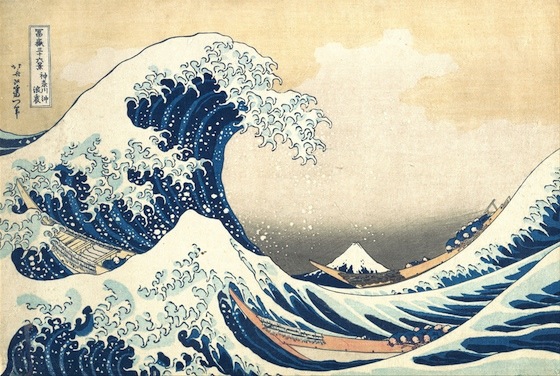
historical context of The Great Wave
Beginning in 1640, Japan was largely closed off to the world and only limited interaction with China and Holland was allowed. This changed in the 1850s, when trade was forced open by American naval commodore, Matthew C. Perry. After this, there was a flood of Japanese visual culture into the West
inspired many future impressionist arts in the west and europe such as Claude monet
characteristics of Japanese art
flattening of space, an interest in atmospheric conditions, and the impermanence of modern city life
japonisme
refers to the fashion for Japanese art in the West and the Japanese influence on Western art and design following the opening of formerly isolated Japan to world trade in 1853.
James Mcneil Whistler
Caprice in Purple and Gold
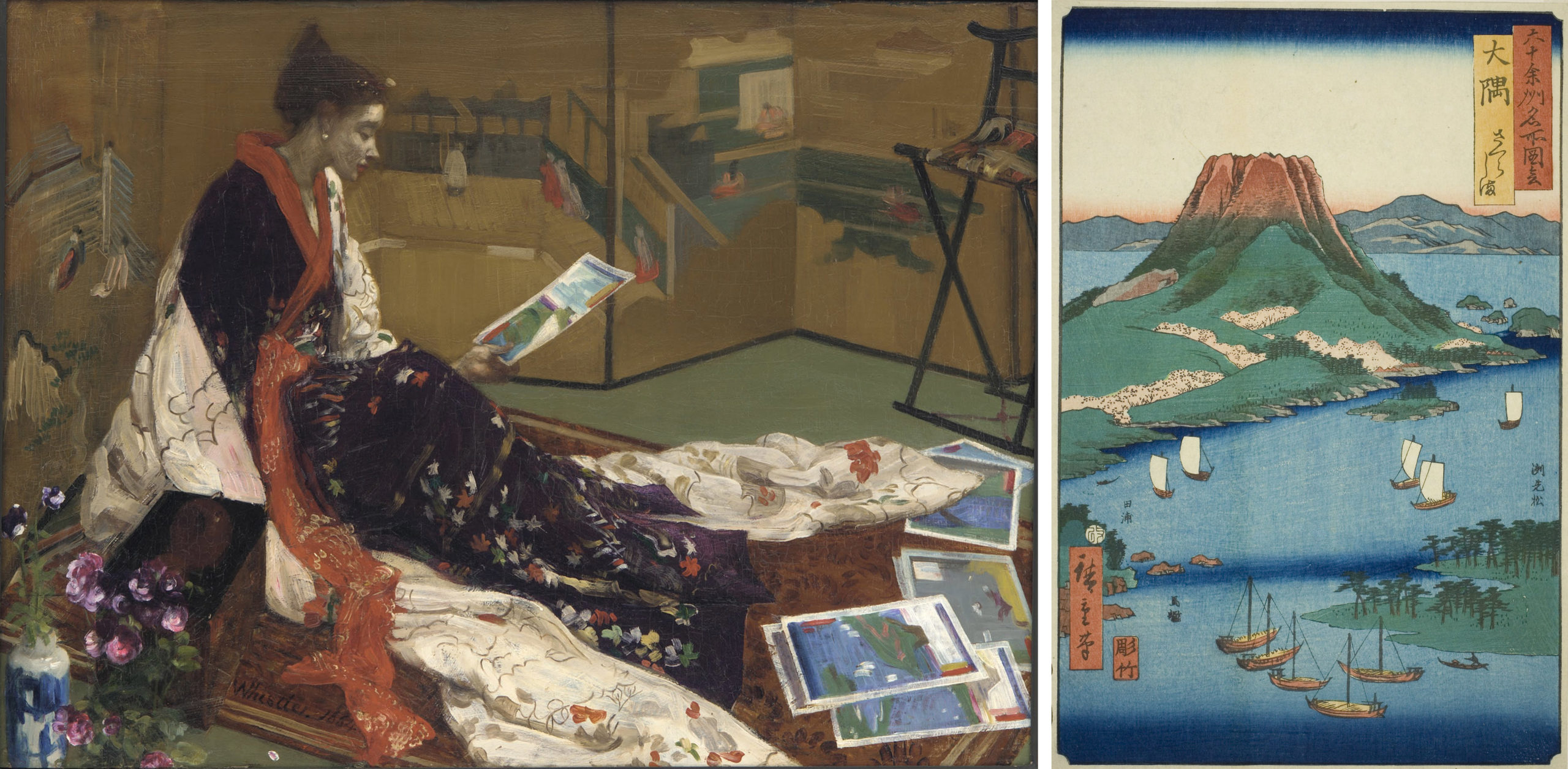
Siegfried Bing
one of the earliest importers of Japanese decorative arts in Paris. He sold them in his shop La Porte Chinoise, as well as promoting them in his lavish magazine Le Japon Artistique, published from 1888-1891.
Edouard Manet
Emilie Zola 1868
the impressionist style is drawn from japanese style and depictions of japanese woodblocks show the late 19th century fascination with Japanese art and decoration

Claude Monet
Water Lillies and Japanese Bridge 1899
inspired by japanese gardens and an japanese style wooden bridge
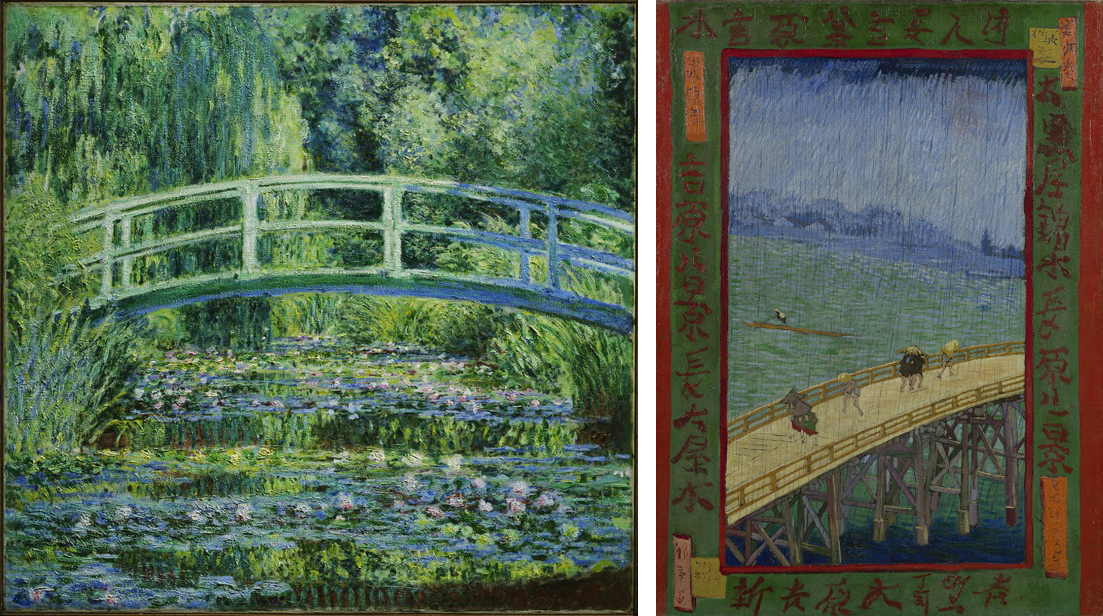
Mary Cassatt
The Letter
employs similar japanese deocrative patterns, flattenend spaces, and simplified figures
Cassatt enjoyed common Ukiyo-e subjects like women in domestic interiors playing with children or grooming themselves
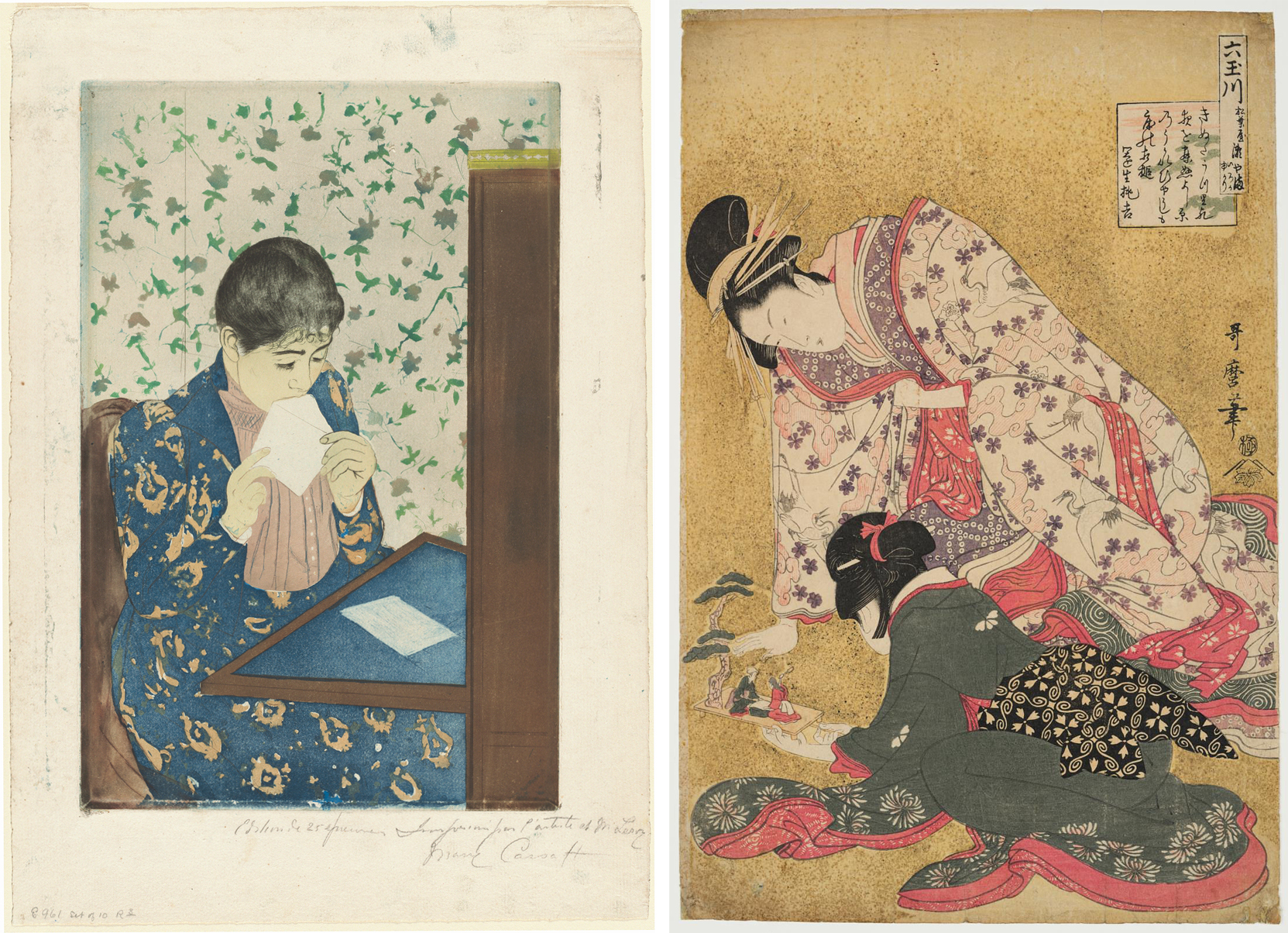
Edgar Degas
The Tub
cassatts frienc
common japanese style of compostion where the vantage point emphasizies the flatness of the shapes of the woman’s body and surroudigns objects
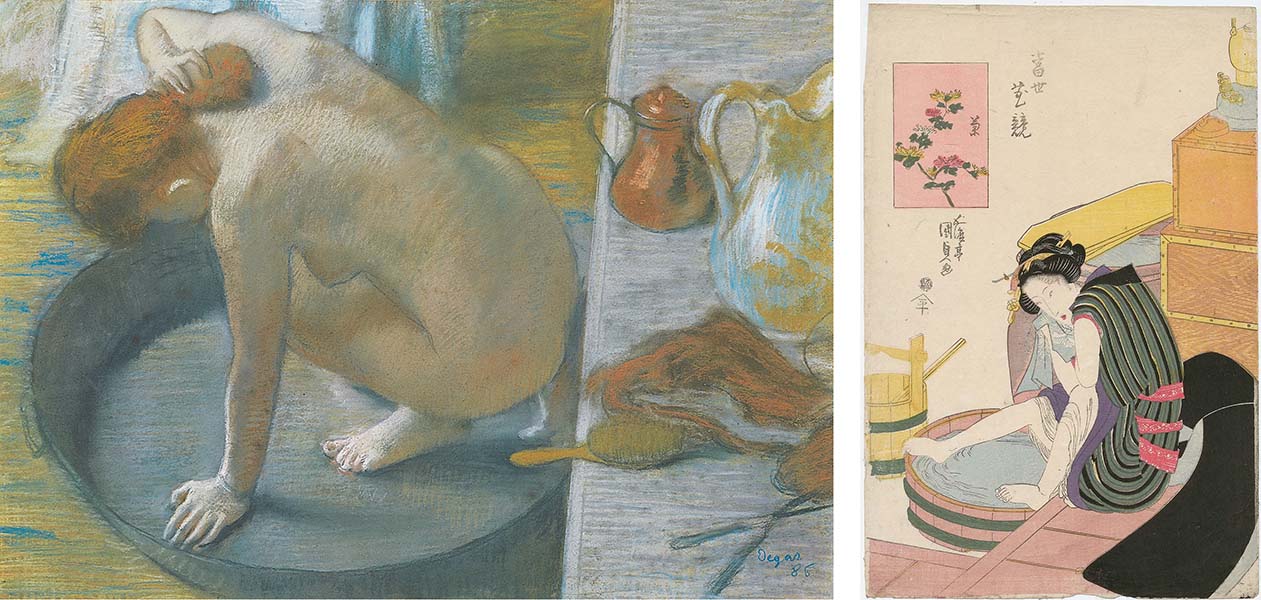
What is the idea behind ukiyo-e art?
To create the transitory and fleeting nature of life
What political conditions allowed for the ukiyo-e art form to emerge?
The shogunate was formed and created political stability
impressionist artists
Claude Monet, August Renoir, Edgar Degas, Berthe Morisot, Alfred Sisley (and several others)
what did the group of impressionist painters call themsleves when they held their first exhbitiion?
the Anonymous Society of Painters, Sculptors, and Printmakers
held their first show in may 1874
what was the major criticism of impressionist paintings?
looked like unfinished sketches, fast and preliminary “impressions” that artists would dash off to preserve an idea of what to paint more carefully at a later date.
how did impressionists (and realists) challenge the staus quo of the time?
the held their own exhibtions in spite of the heavily critical Salon
they also challenged the Academy’s idea of accpetable or “goof” subject matter, namely that landscape and genre scenes were just as worthy as history paintings
characteristics of impressionism
tried to arrest a particular moment in time by pinpointing specific atmospheric conditions—light flickering on water, moving clouds, a burst of rain.
optical blending of colors
the appearance of quickly shifting light on the surface of forms and the representation changing atmospheric conditions
create an art that was modern by capturing the rapid pace of contemporary life and the fleeting conditions of light.
impressionists…
painted directly on a white surface
wanted to capture a fleeting moment in time
uses short loose brushstrokes to effectively capture the effects of light and color
“Mixed” colors by juxtaposing them on the canvas